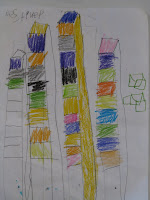It's MCAS Monday for the third graders, their second week of practicing Perkins' math!
Just as a reminder:
Sometimes kids feel as if they learn math in school and then they will never use it again. That’s just not true. People on the construction site of Old Colony need all their math skills. They use math all day, every day.
That’s why students everywhere have to study math. We’re going to do it, Perkins Style. We’ll show you a math question from a previous year’s MCAS test for third graders. Then we’ll give you another question using real data from the construction site.
Our students can study for their MCAS by solving both problems. Third graders, print these out and give them a try! We’ll show a few worksheets on the blog later on this week.
This is part of an actual question from an MCAS test a few years ago:Question 3.2 Jamie is measuring her pet mouse.
Should Jamie measure her mouse’s weight in feet, ounces, or tons?
Use the space below to explain how you know your answer is correct.
Here's our Perkins' version. 
The average hard hat worn by construction workers weighs 14 ounces.
Sara has 10 hard hats and she figured out how much they weigh all together.
Should Sara write out the total weight of all the hats in feet, pounds, or tons?
Use the space below to explain how you know your answer is correct.
3.3
Here's the actual MCAS question: Here's our Perkins' version.
Here's our Perkins' version.
On January 4, 2011, our blog had a post saying that a lot of construction work was done during school vacation. It showed pictures taken from the school's front door on the last day before vacation, December 23rd and the first day back, January 3rd.
Not counting the last day of school or the first day back, how long was the vacation?
Which number sentence expresses the right problem and gives the right answer?
A) 9 + 3 = 12 days
B) 9 + 2 = 11 days
C) 8 + 2 = 10 days
D) 8 + 3 = 11 days


































